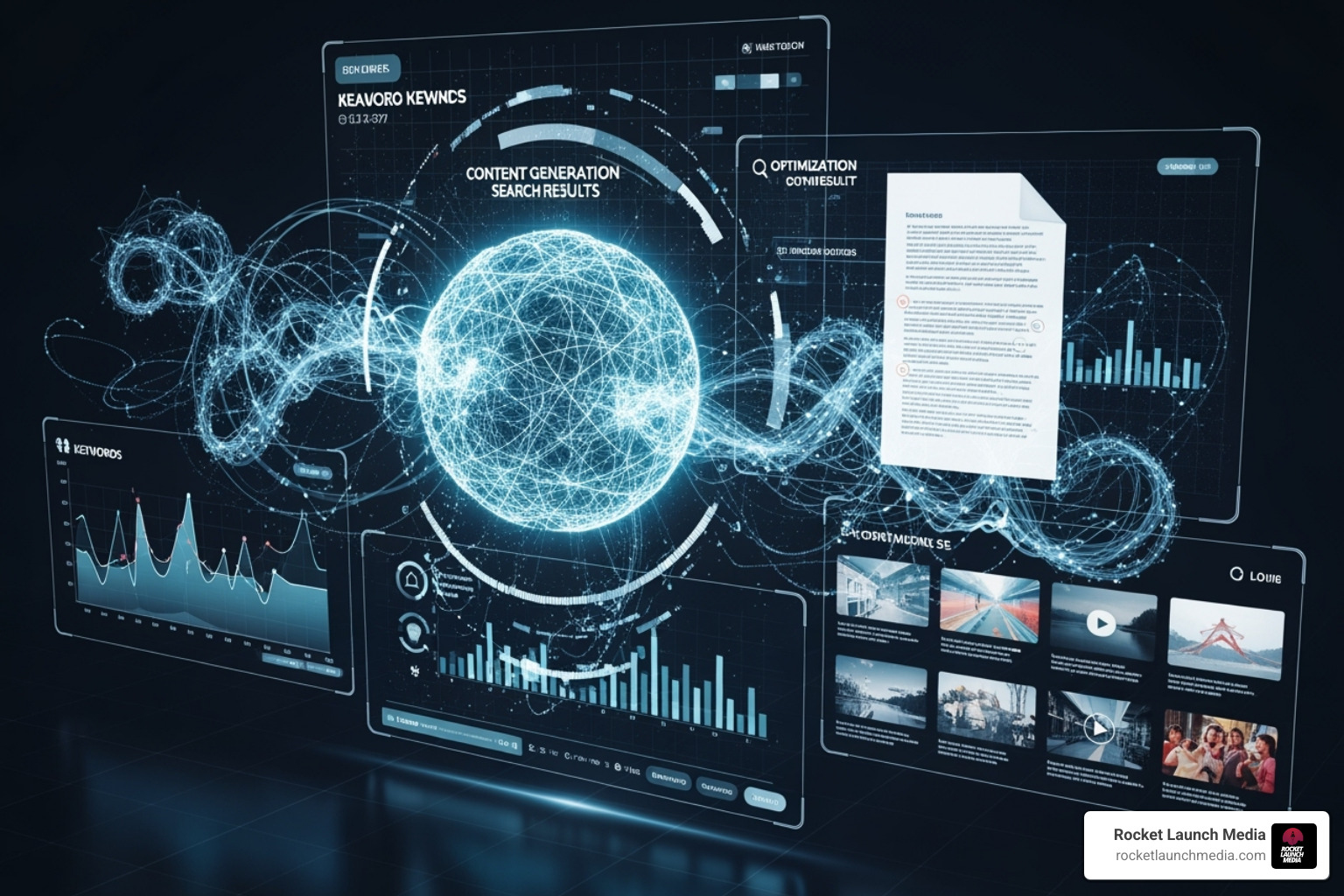To create a successful digital PR campaign, follow a well-structured plan. Here’s a quick rundown:
- Define Your Objectives: Set clear goals and KPIs.
- Research and Analyze: Understand your competitors and target audience.
- Create Compelling Content: Develop a content strategy and leverage multimedia.
- Execute Your Campaign: Build relationships and distribute press releases.
- Measure and Optimize: Use analytics tools and refine your strategy.
In today’s digital world, building brand awareness and visibility is more important than ever. Digital PR campaigns, which use online channels, provide businesses with a way to get noticed by the right people. Whether it’s through social media, blogs, or online publications, a well-executed digital PR campaign amplifies your brand’s story and boosts your online presence.
I’m Ahmed Elmahdy, the founder of Rocket Launch Media. With over a decade of experience, I’ve helped numerous businesses thrive through effective digital PR campaigns. Let’s dive deeper into how you can craft an impactful digital PR plan.
Key digital pr campaign vocabulary:
Step 1: Define Your Objectives
Before diving into the nitty-gritty of a digital PR campaign, it’s crucial to set clear objectives. This ensures that every effort you make is aligned with your overall business goals. Here’s how to get started.
Set Clear Goals
First, you need to define what you want to achieve. Your goals should be:
Measurable: Use metrics to track progress.
Specific: Clearly outline what you aim to accomplish.
Achievable: Set realistic targets.
Relevant: Ensure goals align with your business objectives.
Time-bound: Set a deadline to achieve your goals.
For example, if you’re a local retailer, your goal might be to increase foot traffic by 20% in six months. If you’re an eCommerce business, you might aim to boost online sales by 15% over the next quarter.
Identify Key Performance Indicators (KPIs)
Once your goals are set, you need to identify the Key Performance Indicators (KPIs) that will help you measure success. Here are some essential KPIs for a digital PR campaign:
Website Traffic: Track the number of visitors coming to your site. Tools like Google Analytics can help you monitor this.
Backlinks: Measure the number and quality of links from other websites pointing to your site. High-quality backlinks can improve your site’s domain authority and search engine ranking.
Social Media Engagement: Look at likes, shares, comments, and mentions on social media platforms. This helps gauge how well your content resonates with your audience.
Brand Mentions: Track how often and where your brand is mentioned online. This can include blogs, news sites, and social media.
Conversions: Monitor the number of visitors who take a desired action, such as signing up for a newsletter or making a purchase. A higher conversion rate indicates that your campaign is effective.
Sentiment: Measure the tone of the conversations about your brand. Are the mentions positive, negative, or neutral? Sentiment analysis tools can help with this.
By setting clear goals and identifying the right KPIs, you’re laying a solid foundation for a successful digital PR campaign.
Next, we’ll explore how to conduct research and analyze your competition to fine-tune your strategy.
Step 2: Research and Analyze
Before you dive into creating content or pitching to media, understand the landscape. This means conducting thorough research and analysis. Here’s how to do it.
Conduct Competitor Analysis
Knowing what your competitors are up to can give you a significant edge. Here’s what to focus on:
Competitor Strategies: Identify your main competitors and analyze their digital PR strategies. What tactics are they using? Are they focusing on social media, blog posts, or influencer partnerships? Understanding their approach can help you identify what works and what doesn’t.
Backlink Profiles: Use tools like Ahrefs to analyze the backlinks your competitors have. This can give you insights into which sites might be open to linking to your content. High-quality backlinks improve your SEO and increase your site’s authority.
Content Gaps: Look at the content your competitors are producing and identify gaps. Is there a topic they haven’t covered that you can? Filling these gaps can position you as a thought leader in your industry.
Understand Your Target Audience
To create content that resonates, you need to know your audience inside and out. Here are some ways to gather audience insights:
Surveys: Conduct surveys to get direct feedback from your audience. Ask about their pain points, interests, and what type of content they find valuable. Tools like SurveyMonkey can help you create and distribute surveys easily.
Social Media Interaction: Monitor your social media channels to see what your audience is talking about. What posts are they engaging with? What questions are they asking? This can provide valuable insights into their needs and preferences.
Buyer Personas: Create detailed buyer personas to represent your target audience segments. Include information like demographics, behavior patterns, motivations, and goals. This helps in tailoring your content and PR efforts to meet their specific needs.
Media Research
To get your content picked up by the right outlets, you need to know where your audience spends their time. Here’s how to conduct effective media research:
Industry Trends: Stay updated with the latest trends in your industry. What are the hot topics? What kind of content is getting the most attention? Tools like BuzzSumo can help you identify trending topics and popular content.
Media Outlets: Identify the media outlets, blogs, and influencers that your target audience follows. Make a list of these outlets and start building relationships with them. Personalized pitches to these outlets can significantly increase your chances of getting coverage.
Journalist Preferences: Research the journalists who cover your industry. What kind of stories do they write? What are their interests? Tailoring your pitches to align with their preferences can make a big difference.
By conducting thorough research and analysis, you’ll be well-prepared to create a digital PR campaign that stands out. Next, we’ll dive into how to create compelling content that captures attention.
Step 3: Create Compelling Content
Once you’ve done your research, it’s time to create content that will captivate your audience and achieve your digital PR campaign goals. Here’s how to do it effectively.
Develop a Content Strategy
Content marketing is the backbone of any successful digital PR campaign. To ensure your content hits the mark, you need a solid strategy.
Content Pillars: These are the main themes or topics that your content will revolve around. For example, if you’re a health brand, your pillars might be nutrition, fitness, and mental well-being. Having clear pillars helps maintain consistency and relevance.
Editorial Calendar: This is your roadmap. It outlines what content you’ll publish, when, and where. An editorial calendar keeps you organized and ensures you cover all your content pillars regularly. Tools like Trello or Asana can help you manage this.
Content Formats: Diversify the types of content you create. This could include blog posts, infographics, videos, podcasts, and interactive content. Different formats can engage different segments of your audience and keep your content fresh.
Leverage Multimedia
Multimedia content is more engaging and shareable than text alone. Here’s how to use different formats effectively:
Infographics: These are great for presenting data and statistics in a visually appealing way. For example, Signs.com created an infographic showing how well people could draw famous logos from memory. This visual-led content earned them over 1200 backlinks and coverage from major publications.
Videos: Video content is highly engaging and can convey complex information quickly. Consider creating how-to videos, behind-the-scenes looks, or customer testimonials. Platforms like YouTube and Instagram are perfect for sharing videos.
Podcasts: Podcasts are growing in popularity and are a great way to dive deep into topics. They can also help you build a loyal audience. Think about starting a podcast series that aligns with your content pillars.
Interactive Content: This includes quizzes, polls, and interactive infographics. Interactive content can boost engagement and provide valuable insights into your audience’s preferences.
Repurposing Content: Don’t reinvent the wheel. Repurpose your existing content into different formats. For instance, turn a blog post into an infographic or a video. This not only saves time but also helps you reach different audience segments.

By developing a well-rounded content strategy and leveraging multimedia, you’ll create compelling content that captures attention and drives your digital PR campaign forward.
Next, we’ll look at how to execute your campaign and build relationships with media and influencers.
Step 4: Execute Your Digital PR Campaign
Once you have compelling content, it’s time to get it out there. The execution phase is crucial for the success of your digital PR campaign. Let’s explore the key steps.
Build Relationships with Media and Influencers
Building strong relationships with media and influencers is essential. These relationships can help amplify your message and reach new audiences.
Journalists and Bloggers: Identify journalists and bloggers who cover your industry. Personalize your pitches to show you’ve done your homework. Mention their previous work and explain why your story is relevant to their audience.
Influencers: Partnering with influencers can give your campaign a significant boost. Choose influencers who share your brand values and have an engaged following. Tools like BuzzSumo can help you find the right influencers.
Personalized Pitches: Generic pitches are easy to ignore. Personalize your pitches by addressing the recipient by name and tailoring your message to their interests. Explain why your content is valuable to them and their audience.
Example: When Airbnb partnered with The New York Times, they created a co-branded content series called “52 Places to Go.” This collaboration increased brand awareness and traffic for both brands.
Distribute Press Releases and Guest Posts
Press releases and guest posts are powerful tools for gaining media coverage and backlinks.
Press Releases: Write newsworthy press releases that grab attention. Include a clear and catchy headline, relevant facts, and a compelling story. Distribute your press releases to relevant media outlets and journalists.
Guest Posts: Guest posting on authoritative websites can boost your SEO and credibility. Write high-quality, informative articles that provide value to the host site’s audience. Include a link back to your website to improve your backlink profile.

Newsworthy Announcements: Timing is everything. Announce your news when it’s most relevant. For example, if you’re launching a new product, tie it to a current trend or event to make it more newsworthy.
Authoritative Content: Ensure your content is authoritative and well-researched. Include quotes from experts, relevant statistics, and data to support your claims.
Example: Nike’s campaign with Colin Kaepernick generated significant online coverage and backlinks. The campaign’s bold message and timing made it newsworthy and impactful.
By building strong relationships and strategically distributing your content, you’ll maximize the reach and effectiveness of your digital PR campaign.
Next, we’ll explore how to measure and optimize your campaign for continuous improvement.
Step 5: Measure and Optimize
Once your digital PR campaign is live, it’s crucial to measure its performance and make necessary adjustments. This ensures continuous improvement and maximizes your return on investment (ROI).
Use Analytics Tools
Effective measurement starts with the right tools. Here are some must-haves for tracking your campaign’s performance:
Google Analytics: This free tool tracks website traffic, user behavior, and conversions. It helps you understand where your visitors come from and how they interact with your site.
Google Search Console: This tool measures clicks, impressions, and position rankings for specific keywords. It also monitors “brand name” searches, indicating how often your brand is being searched.
Ahrefs: Use this SEO tool to measure your Domain Rating, conduct backlink analysis, and identify unlinked mentions. It helps you understand your website’s authority and link-building success.
BuzzSumo: Find content ideas, influencers, and how often your content is shared on social platforms. BuzzSumo helps you gauge the social impact of your campaign.

Optimize Based on Data
Once you have performance data, it’s time to optimize. Here’s how to do it:
Analyze Performance Data: Look at key metrics like website traffic, social media engagement, and backlinks. Identify what worked and what didn’t.
Adjust Your Strategy: Use insights from your data to tweak your strategy. For example, if a particular type of content performs well, create more of it.
Seek Feedback: Gather feedback from your audience and media outlets. Use this to improve your content quality and relevance.
Test and Experiment: Try different content formats, topics, and channels. Measure their impact and adjust accordingly.
Example: WriterBuddy’s data visualization campaign used engaging visuals to attract attention. They invested in a high-quality design, which led to coverage from major publications like Forbes and CNET.
Case Study: Insurance.com’s “Most Ticketed Cars” campaign used internal data to create a compelling story. This approach resulted in coverage from top sites like USA Today and MotorTrend, boosting their backlink profile.
By continuously measuring and optimizing your digital PR campaign, you can ensure it remains effective and delivers the best possible results.
Next, we’ll address some frequently asked questions about digital PR campaigns.

Frequently Asked Questions about Digital PR Campaigns
What is a Digital PR Campaign?
A digital PR campaign is a strategic online marketing effort designed to increase a brand’s visibility, credibility, and authority on the web. Unlike traditional PR, which relies on offline media like newspapers and TV, digital PR uses online channels such as blogs, social media, and websites to reach a target audience.
Digital PR campaigns involve creating and distributing high-quality content, building relationships with online influencers, securing mentions and backlinks from reputable sites, and managing your online reputation.
How is Digital PR Different from Traditional PR?
Traditional PR focuses on offline media outlets like newspapers, magazines, and TV. It uses methods such as press releases, interviews, and event coordination to build brand awareness.
Digital PR, on the other hand, leverages online channels. Here are some key differences:
- Online Presence: Digital PR boosts your brand’s online visibility and search engine ranking.
- Media Coverage: It secures mentions and backlinks from authoritative websites, improving your SEO.
- Social Media: Digital PR uses platforms like Twitter, Facebook, and Instagram to engage with audiences directly.
- Measurement: Digital PR campaigns can be tracked and measured using analytics tools, making it easier to see the impact.
What are Some Examples of Successful Digital PR Campaigns?
Here are a couple of notable examples:
Airbnb and The New York Times: Airbnb partnered with The New York Times to create a co-branded content series called “52 Places to Go”. The series featured destinations around the world where travelers could stay at Airbnb properties. This collaboration increased brand awareness, traffic, and bookings for both Airbnb and The New York Times.
Nike and Colin Kaepernick: Nike’s campaign featuring Colin Kaepernick used the slogan “Believe in something. Even if it means sacrificing everything.”. It sparked significant online and offline discussions, generating a lot of media buzz and boosting Nike’s sales and market share.
These examples show how digital PR can create compelling stories that resonate with audiences and generate substantial media coverage.
Next, we’ll conclude our guide on planning a digital PR campaign.
Conclusion
Planning a digital PR campaign can transform your brand’s online presence by leveraging targeted strategies and media outreach. At Rocket Launch Media, we specialize in digital marketing, including PPC, SEO, and social media advertising, to deliver tangible results.
Our custom digital marketing services focus on increasing your brand’s visibility, driving more traffic to your website, and boosting your overall sales and revenue. With our expertise, you can expect:
- Higher Search Engine Rankings: Our SEO strategies will lift your site to the top of search results.
- Increased Traffic and Conversions: Effective PPC campaigns will drive quality traffic that converts into customers.
- Improved Social Media Engagement: Our social media advertising connects you with your audience, fostering engagement and loyalty.
Ready to lift your brand with a winning digital PR campaign? Contact Rocket Launch Media today to get started and see how we can help you achieve your business goals.





